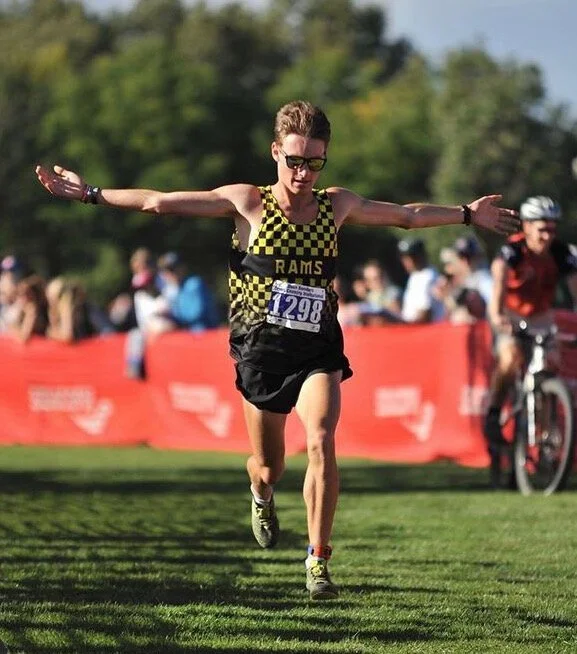Track & Field Recruiting Resources: For Athletes
During my thirty-year college coaching career, I received numerous e-mails from talented student-athletes daily. How are you going to standout?
This is your opportunity to both express your interest in a specific program and create your personal narrative. This is your chance to let coaches know who you are. Identify your strengths and let coaches know why you are interested in their program.
I have had significant experience interacting with recruits of varying degrees of ability; from the number one ranked athlete in the USA to a high school cross country team’s seventh runner. There is a place for everyone, whether it be at a Power Five school, an Ivy League institution, an NCAA I mid-major or NCAA Division II / III and NAIA schools.
Over the course of my coaching career, I have identified a few basic principles that are applicable throughout the recruiting process, regardless of your level of ability.
The entire recruiting process can be underwhelming if you do not do your research. However, if you create a sound plan of attack it will be an amazing experience. You are actively running toward your dreams!
The NCAA currently reports that over 1.5 million boys and girls participate in high school track & field and cross country. Of those 1.5 million participants, only 85,000-90,000 will compete in college, or approximately 4-7% depending upon event and gender. A large majority of that 4-7% will be asked to walk-on and not receive any athletic money.
As a result, it is imperative that you devise a plan of action early on in your high school career. You have worked too hard and sacrificed far too much to idly wait for the process to begin. Take control of your destiny in the same way you have your academic and athletic endeavors. The recruiting process will require the same such commitment from you.
Below are three factors to considering when searching for the college of your dreams.
DETERMINE THE BEST FIT FOR YOU
During your freshmen and sophomore years create an expansive list of schools/programs that meet your specific needs and desires. Among factors to consider are affiliation level (NCAA I, II, III, NAIA, and JUCO), the competitiveness of the program, cost of attendance, quality of education, geographical location, intended academic major, enrollment size, public vs private, and other factors that matter to YOU.
Do not be mesmerized by the name of a school. See beyond the prowess of their football and basketball programs or their academic reputation. Make sure the school you choose meets your needs for reasons beyond it simply being cool to tell the world you will be running or studying at a particular school.
Remember, you have to live, study, train and compete there every day for four years. Many brilliant scholars and successful professionals have attended state schools with less than brilliant academic reputations. Additionally, many NCAA I mid-major athletes have claimed NCAA National Championships on the team and individual level.
In fact, at this year’s NCAA National Outdoor Track & Field Championships nearly 33% of the participants represented non-Power 5 schools – three were crowned NCAA National Champion and an additional 14 scored for their teams by placing in the top eight. Furthermore, US Olympian and World Championship Silver Medalist, Nick Symmonds competed at the NCAA III level while in college.
Plain and simple, choose a school that you would be happy at without track and field - just in case your athletic career does not go as planned.
TAKE CHARGE
Do not be passive. At the conclusion of your freshman year and throughout your sophomore year, start reaching out to college coaches from the schools on your list. In my personal dealings with high school student-athletes, I often heard prospects state that the schools on their list were comprised solely of programs that contacted them.
If a program you’re interested in does not reach out to you, reach out to them! You will be surprised at how effective personally reaching out will enhance your recruiting experience. There could be many factors why a school has not reached out to you – one being as simple as you not receiving the letter that was sent to your HS coach or guidance college – this happens more than imagined.
During the summer after your sophomore year and throughout the course of your junior year, take as many unofficial visits as possible. This will give you an opportunity to meet the coach in person, tour the college, check out the athletic facilities, and possibly meet current team members.
There is no limit on the number of unofficial visits that you can take – so take many!
During your senior year schedule and take all five allowable official visits. Your decision is far too important and impactful not to explore all possibilities. If the majority of your visits require extensive travel speak to the coaches about combining two visits into one trip to cut down on flights across the country, particularly if in-season.
COMMUNICATE EFFECTIVELY
Over the span of my thirty-year coaching career, I learned that communication is the most important element in reaching your goals. It is imperative that you learn to communicate openly and effectively with your parents, high school coach, and college coaches.
Ask your parents to help you create a series of questions to ask college coaches, begin to narrow your list of potential schools, and arrange the logistical aspects of visit coordination. However, you should be the primary voice writing the emails, taking the phone calls, and asking questions.
Clearly articulate your specific running goals to your high school coach. Ask them to create a sound developmental training plan that will allow you to fully actualize your athletic potential over the span of your high school career. Seek their advice on potential options for you to continue your athletic career based on their past experiences and ask them to email college coaches on your behalf.




